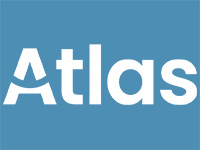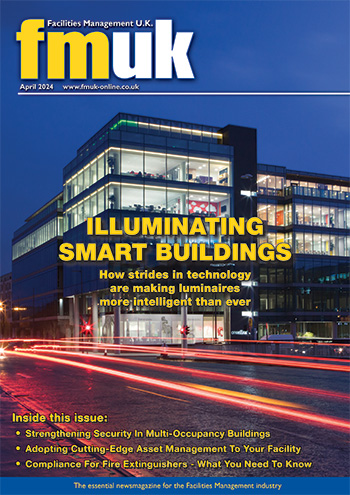COVID-Proofing And The Dangerous De-Prioritisation Of Fire Safety
 By Peter Lackey, Fire Manager, Johnson Controls.
By Peter Lackey, Fire Manager, Johnson Controls.
While most of us know somebody who has been robbed, few know people who have been directly impacted by fire. It goes without saying that this is a positive, but it has led to a blasé attitude among many – which in itself is a danger. Enter the Covid-19 pandemic – something which has impacted every one of us, upending almost every aspect of our daily lives – and it’s no wonder fire safety has fallen even further off the radar.
Take facility managers (FMs), who have been tasked with Covid-proofing offices, factories, warehouses and workspaces the world over. With new rules enforced every week, many FMs have struggled to find the time to focus on much more than the most immediate issues. But fire safety is always immediate. Ensuring the safety of people at work might be more in the spotlight than ever before, but the race to Covid-proof is letting other critical safety issues fall by the wayside.
When it comes to businesses, the truth is that fire detection systems and servicing and maintenance contracts are a grudge purchase at the best of times. This problem has only worsened over the past year. As businesses switched to remote working, servicing contracts dropped off the radar. With no employees around, fire alarms have gone untested, have missed upgrades or have even failed to sound. Upholding fire safety measures is both a moral consideration and a legal requirement, and businesses must treat it with the attention it deserves.
The Changing Nature Of Building Occupancy
Every business has faced unique challenges in their response to the pandemic. We’ve seen some continue operating as usual, some pivot production to make face masks and hand sanitiser, while others have shut their doors for the foreseeable future.
Those that remained open will likely have experienced considerable changes to workplace layouts, which may in turn have had adverse effects on fire safety – for example, fire doors being wedged open for ventilation, or because people don’t want to touch door handles; and new one-way systems that affect shared escape routes. What’s more, fluctuating staff occupancy levels mean there may not be enough fire wardens present should an alarm sound.
All of these changes have an impact. In the event of a fire, your staff and assets might not be as safe as you think. But there is a simple solution: fire risk assessments. The vast majority of companies have undergone a change of occupancy during the pandemic and, as a result, must review their current fire safety measures through a risk assessment.
This involves looking at a building’s people, processes, procedures, contents and technologies, from fire alarms to sprinkler systems, with the aim of addressing any faults. With occupancy levels and more changed for the meantime – and possible for the long-term too – it’s vital to update your risk assessments. Failing to do so could have severe reputational and financial repercussions, particularly if livelihoods are affected. Should the worst happen, it could also lead to insurers refusing any pay-outs from failing to secure the premises, leading to even more difficulties down the line.
Socially-Distanced Risk Assessments
We often find that businesses lack staff with the appropriate training and skillsets in-house to conduct a sufficient fire risk assessment. But even with the current restrictions, there’s no reason risk assessments can’t be easily carried out by qualified third-parties.
Many buildings lie vacant, meaning assessors simply need to show up in their PPE and conduct the assessment under social distancing guidelines. Technology can also play an important role, by ensuring a building’s safety systems are in order through remote diagnostic tools. Some assessors can even carry out a vast majority of the assessment virtually, examining floorplans, exit routes, and tech stacks from the comfort of their own homes. That said, many businesses won’t have the latest IoT sensors needed to notify FMs on the condition of a building’s physical aspects, such as occupancy levels, open fire doors or signage.
The purpose of a fire risk assessment is to provide FMs with the knowledge they need to ensure their business and assets remain safe and secure, should the worst happen. Covid has not put a stop to this – distraction has. The onus is on FMs to put fire safety back on the priority list.
Remote Work Will Change Fire Safety Forever
The changes ushered in by the pandemic will continue to impact the way we conduct business for years to come. For example, the success of the great work-from-home experiment will see many companies questioning whether they even need all of their office floorspace.
The decisions that follow will have a knock-on effect, as company-wide remote work policies take fire regulations into the home. Elsewhere, the closure of many high street stores will see these buildings put to different use – and such developments will be accompanied by the associated regulatory changes. It’s likely the way we live, work, and play in buildings will have drastically changed in five years’ time. So too will the way we stay safe in the event of fire.
Nobody wants to think they’ll be affected by a fire situation, so people tend to take a chance on fire safety. But when livelihoods and lives are at stake, this approach simply won’t suffice. While it’s unsurprising that FMs’ working lives have been dominated by Covid, the safety of people and assets is too important to drop off the radar. More must be done to raise awareness when it comes to fire safety – we can’t let it slip through the net any longer.
Click the article to enlarge it.


























































